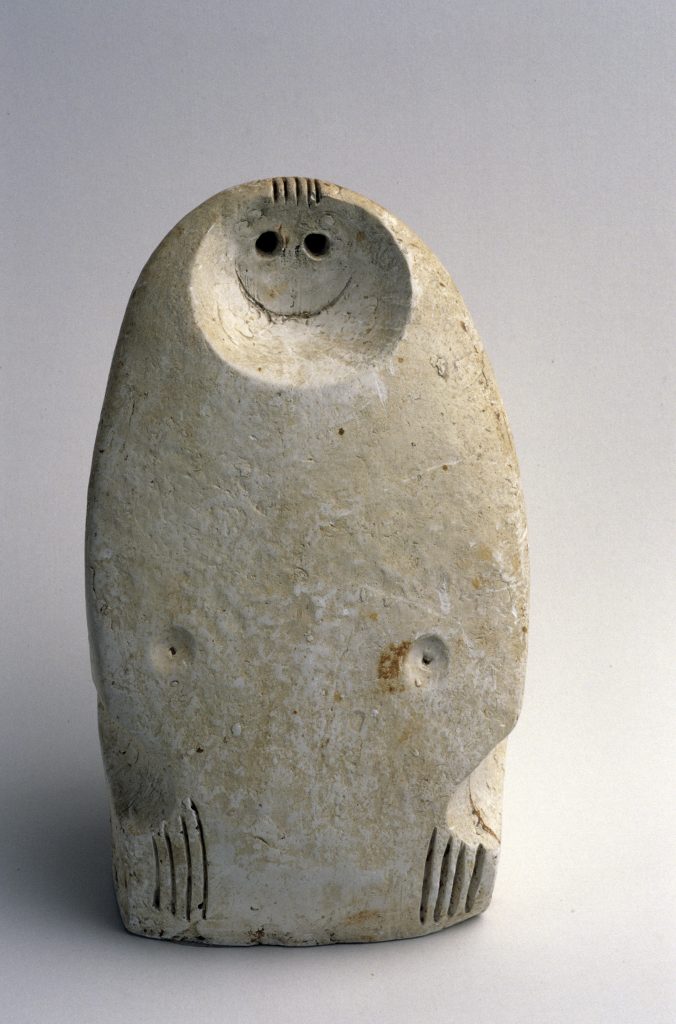
Jakob Savinšek, A Lie, patinated plaster, 1957
9 – 30 December 2025
P74 Gallery
You are cordially invited to attend the opening of the exhibition A Lie on Tuesday, 9 December 2025, between 6pm and 9pm at the P74 Gallery in Ljubljana.
>The exhibition opening is also an opportunity for a cheerful pre-New Year’s gathering. All publications in KAPSULA will be available with a 25% discount during the exhibition duration and all artist/limited editions with 15% discount.
_____
A lie is a false statement deliberately used to deceive the public. In modern history, the phrase ‘a big lie’ was intentionally employed in pre-World War II times to distort the truth. Adolf Hitler called Jews big liars; this technique was used by the Nazis and Joseph Goebbels. The world is becoming increasingly dark. People’s sense of uncertainty, relativity, and lack of personal views are easily stunned by images of imposed doubts. The fields of lies are vast and concern all spheres of social life, most obviously political life. We are dealing with a new epistemology of doubt, which has never concealed, through the rhetoric of personal insults, that it is merely a form of discrediting.
Similar developments occurred during the recent American elections. The rise of new technologies and artificial intelligence has facilitated the spread of fake news and disinformation. Although the term was only introduced in 2012, it has always been part of the media sphere. With Trump, the discussion about fake news and disinformation has finally become global.
The fabric of civilised societies consists of networks of social institutions, including museums, which spark debate about their role, the revision of history, the colonisation of art, and more. Dan Hicks’s recently translated book, The Brutish Museums, is a political manifesto that calls on those responsible to end the false practices with which the West has been justifying its bloody colonial history. The brutal attack that took place after the Brussels Conference in 1874, when Great Britain advocated for the »humanisation of war«, is recorded in history as the opposite of all humanistic initiatives, as it was one of the most brutal attacks on African peoples. This book has undoubtedly stimulated a discussion about the social role of museums, then and now, and their direct connection to politics.
The exhibition, titled A Lie, juxtaposes peripheral works of popular culture, music, modern art, and contemporary art from the 1950s to the present.
Jakob Savinšek is regarded as one of Slovenia’s most significant creative talents after World War II. A Lie, which dates from 1957 and is a part of the Museum of Modern Art Ljubljana’s collection, is a relief in patinated plaster that successfully captures a particular emotional state.
Nina Simone is one of the most influential performers in jazz, cabaret, and R&B genres of the 20th century. She has described her song Mississippi Goddam (1965) as her first to speak explicitly about civil rights. It was created in a surge of rage and hatred when she challenged the imposed false belief that racial prejudice can only change gradually, step by step. She called for immediate action. Mississippi Goddam is a direct response to the racially motivated murders of Emmett Till and Medgar Evers in Mississippi, and to the Birmingham murders, in which four black children died.
The Slovenian Press Agency (STA) media announcement, published on the website 24ur.com on the eve of the opening of the 49th Venice Biennale, was used by the Absolute One project team to manipulate the system and deliberately alter the names of the participating artists. This change of names was not random, as it revealed the underlying power dynamics and relationships.
Henry Lawrence Garfield, known as Henry Rollins, is an American singer, writer, spoken word artist, actor, comedian, and host. A member of the short-lived hardcore punk band State of Alert in 1980, Rollins was the frontman of the Californian hardcore band Black Flag from 1981 to 1986. Following the band’s breakup, he founded the publishing and record company 2.13.61 and formed the Rollins Band. His song Liar (1994) and the accompanying video are masterful examples of the materialisation of narcissistic manipulation, projection, and enclosure. The lyrics speak from the perspective of a manipulative liar who delights in deceiving others, repeatedly luring them closer with false sympathy and friendship.
..Cause I’m a liar, yeah, I’m a liar
I’ll tear your mind out, I’ll burn your soul
I’ll turn you into me, I’ll turn you into me
Cause I’m a liar, a liar, a liar.
Jože Barši‘s new piece examines the relationship between truth and lies and how the latter is articulated. The statement »I always lie« questions authority and thus encourages the listener to think critically. However, the statement is controversial because the word »always« is meant to emphasise that I always lie, but it negates the statement if we accept it as true. If we are to believe it, and if it is indeed true, then the statement »I always lie« is not valid.
_____
Project curated by: Tadej Pogačar
We’d like to thank the Museum of Modern Art Ljubljana for providing a photograph of the sculpture A Lie by Jakob Savinšek, which is part of their collection and was made by Lado Mlekuž and Matija Pavlovec.
